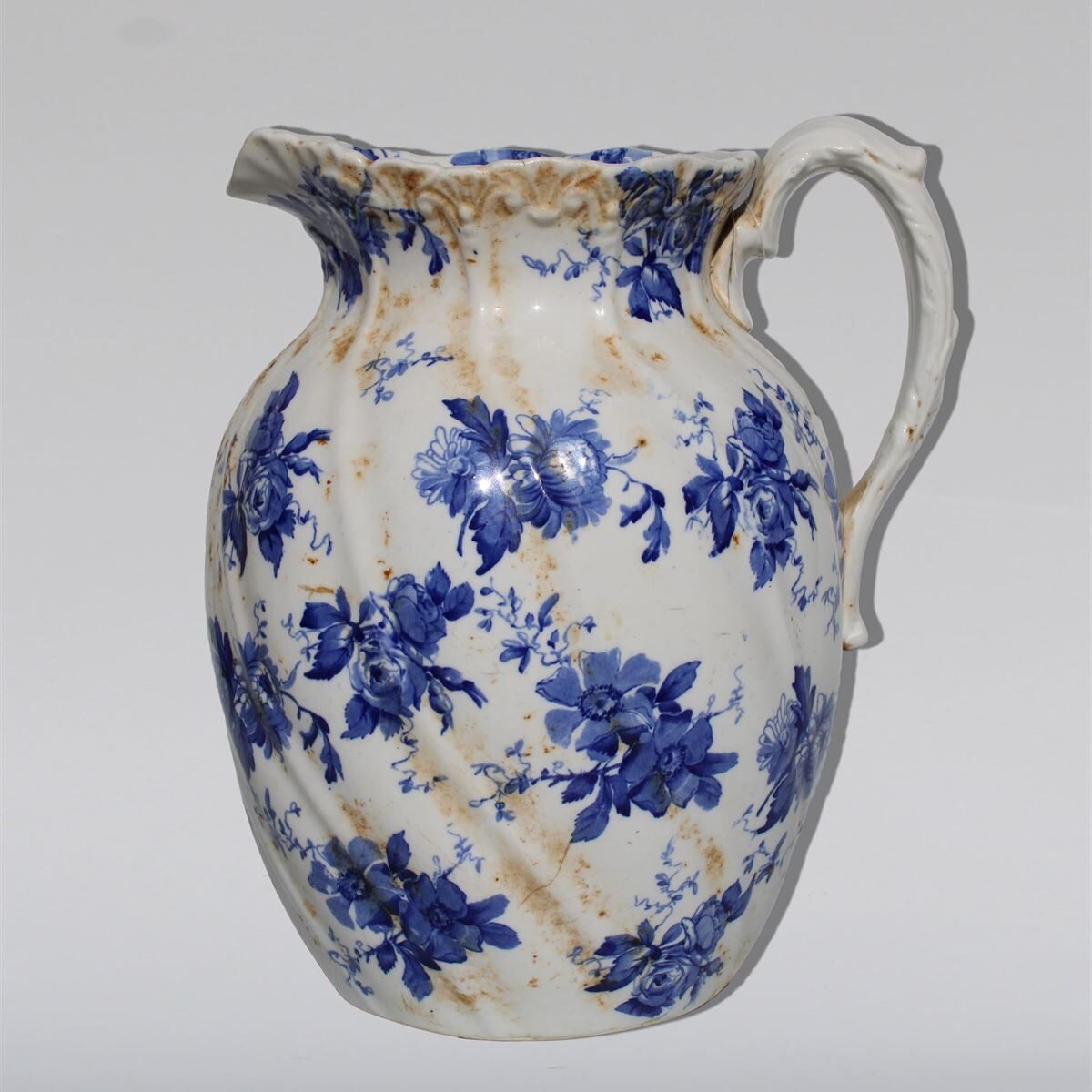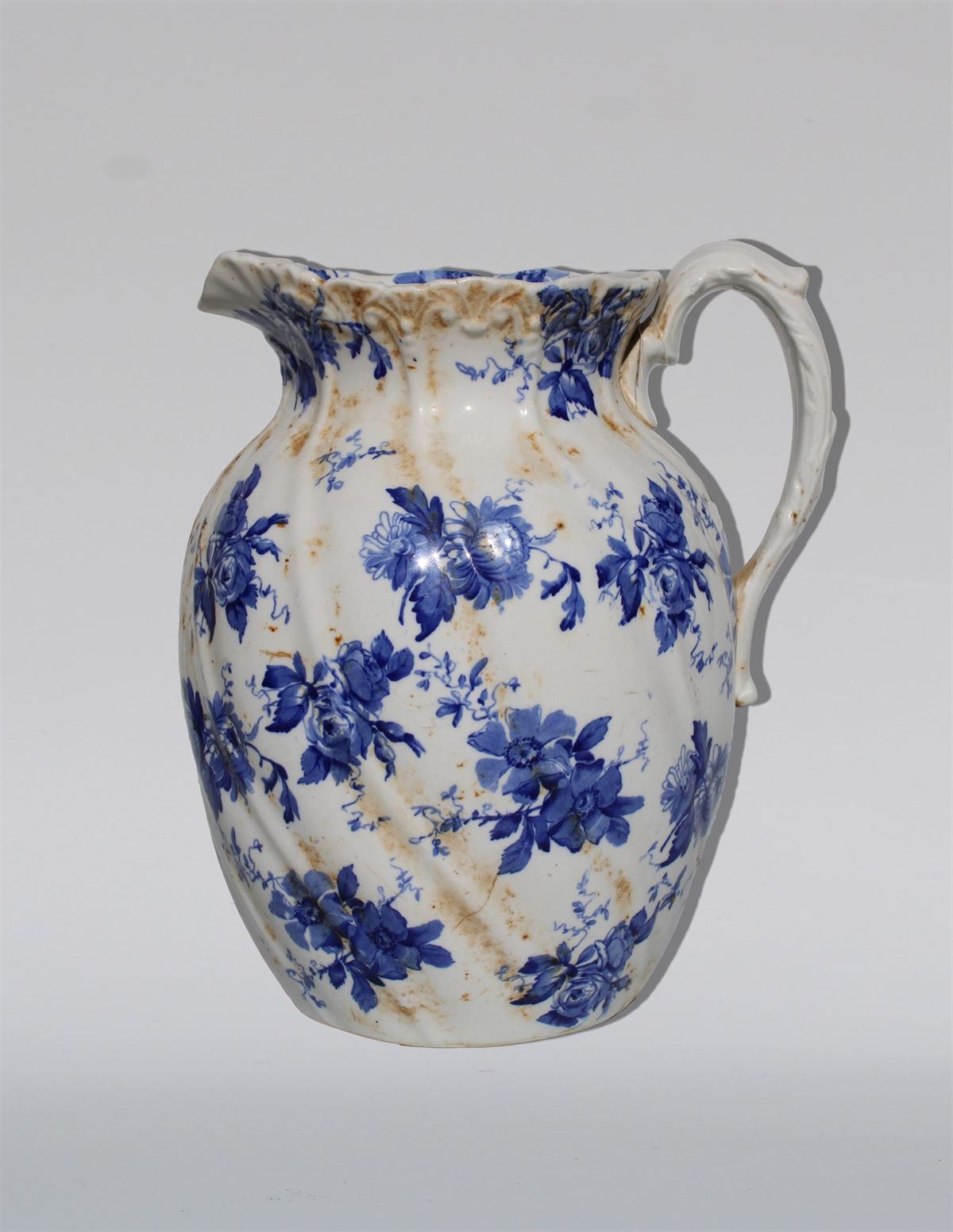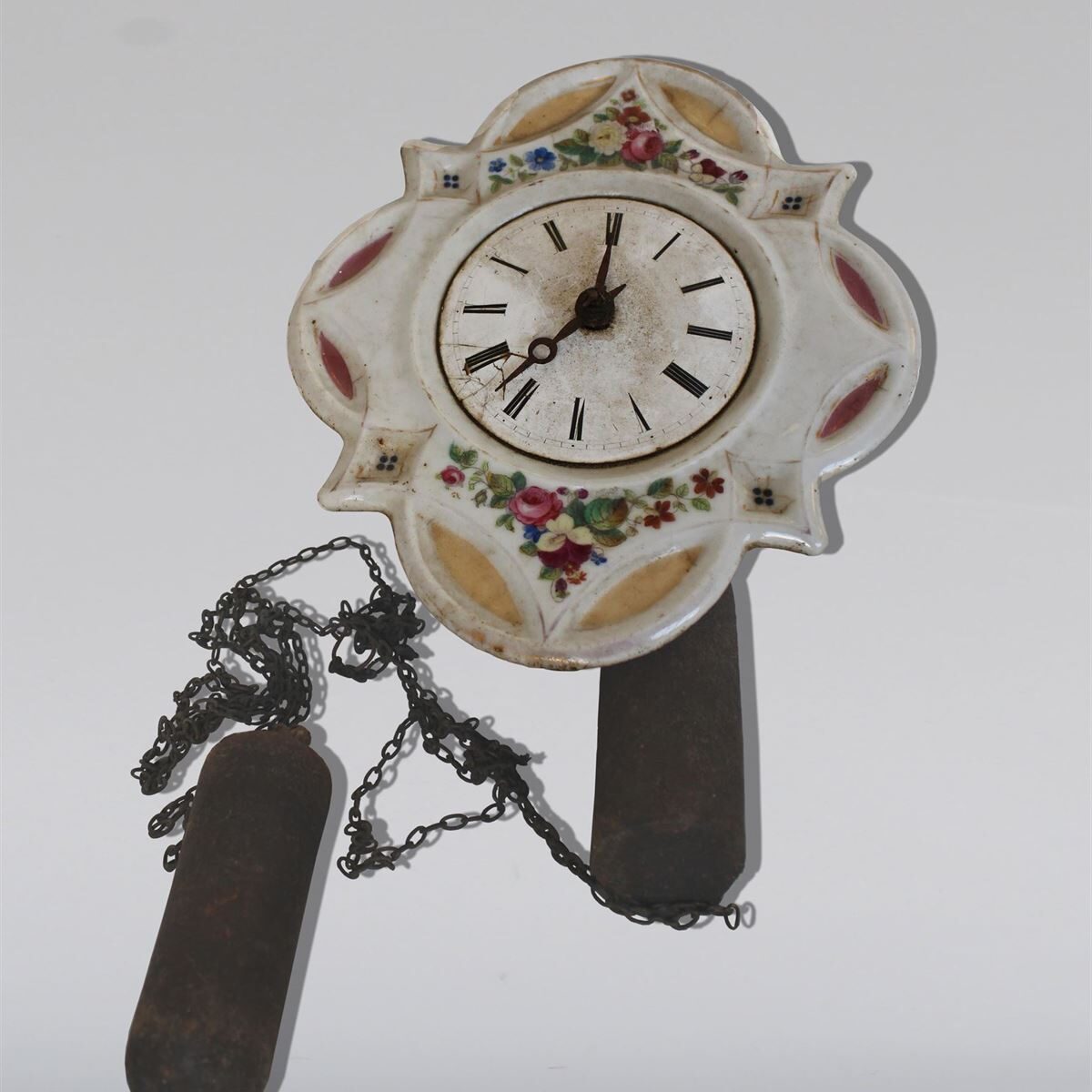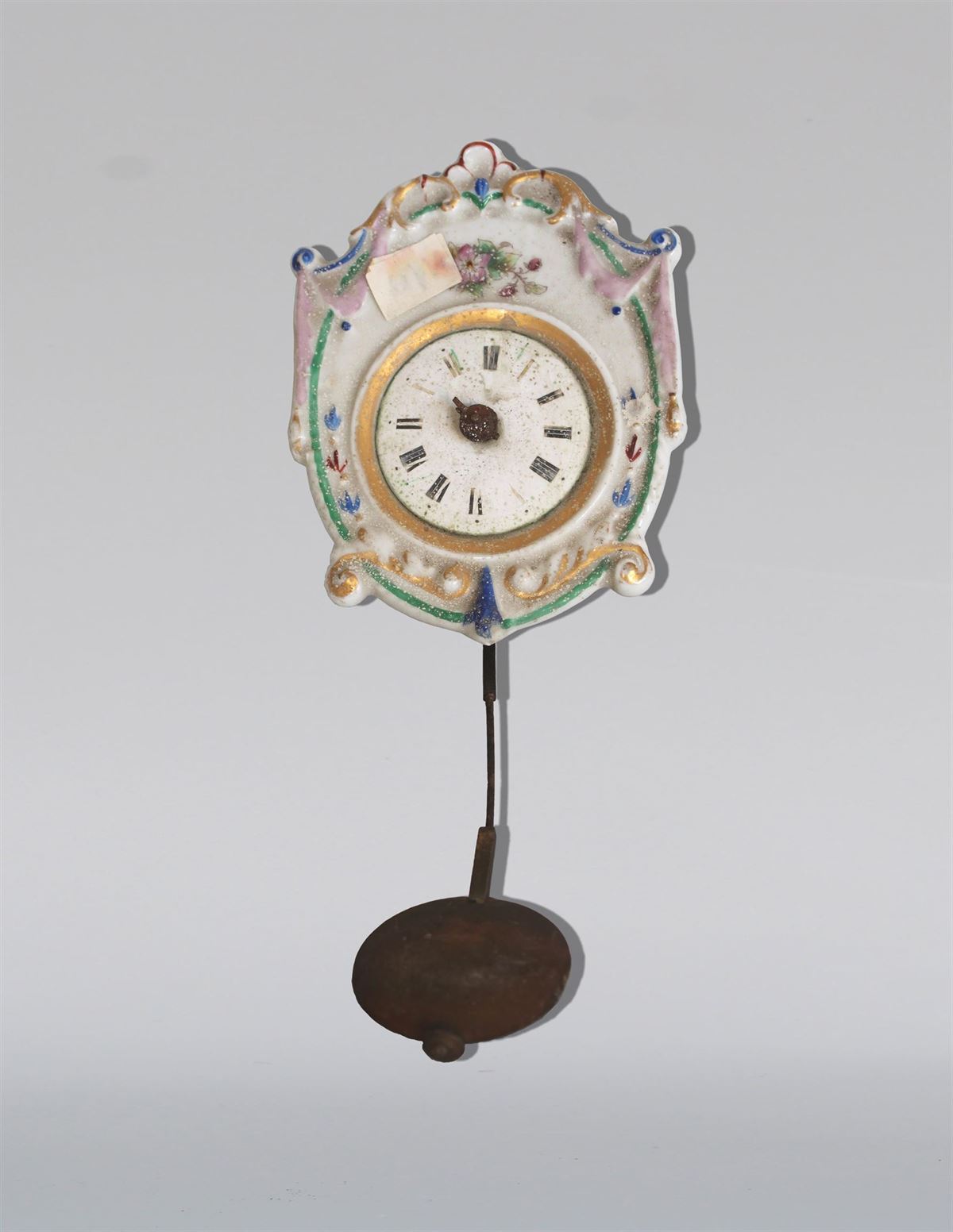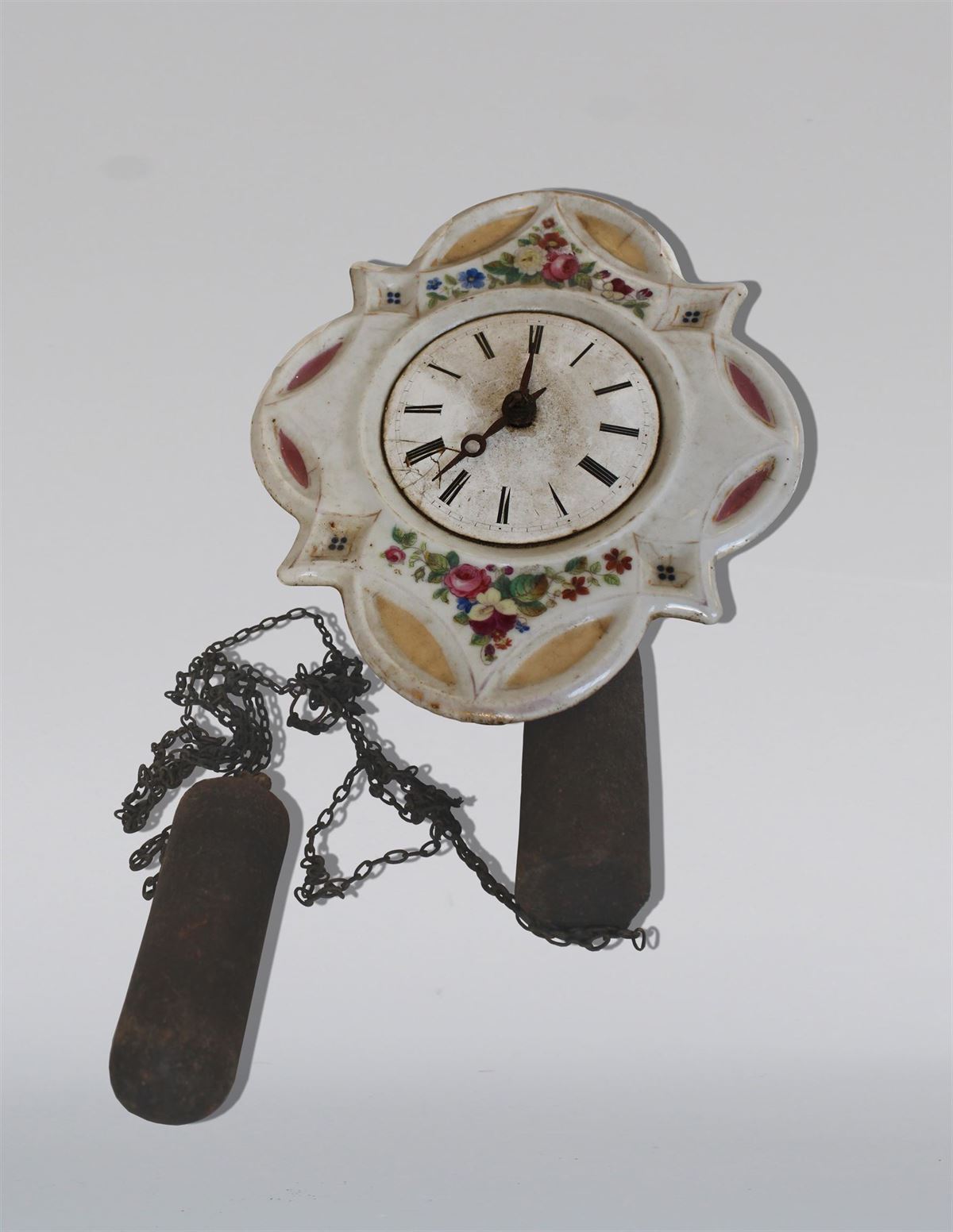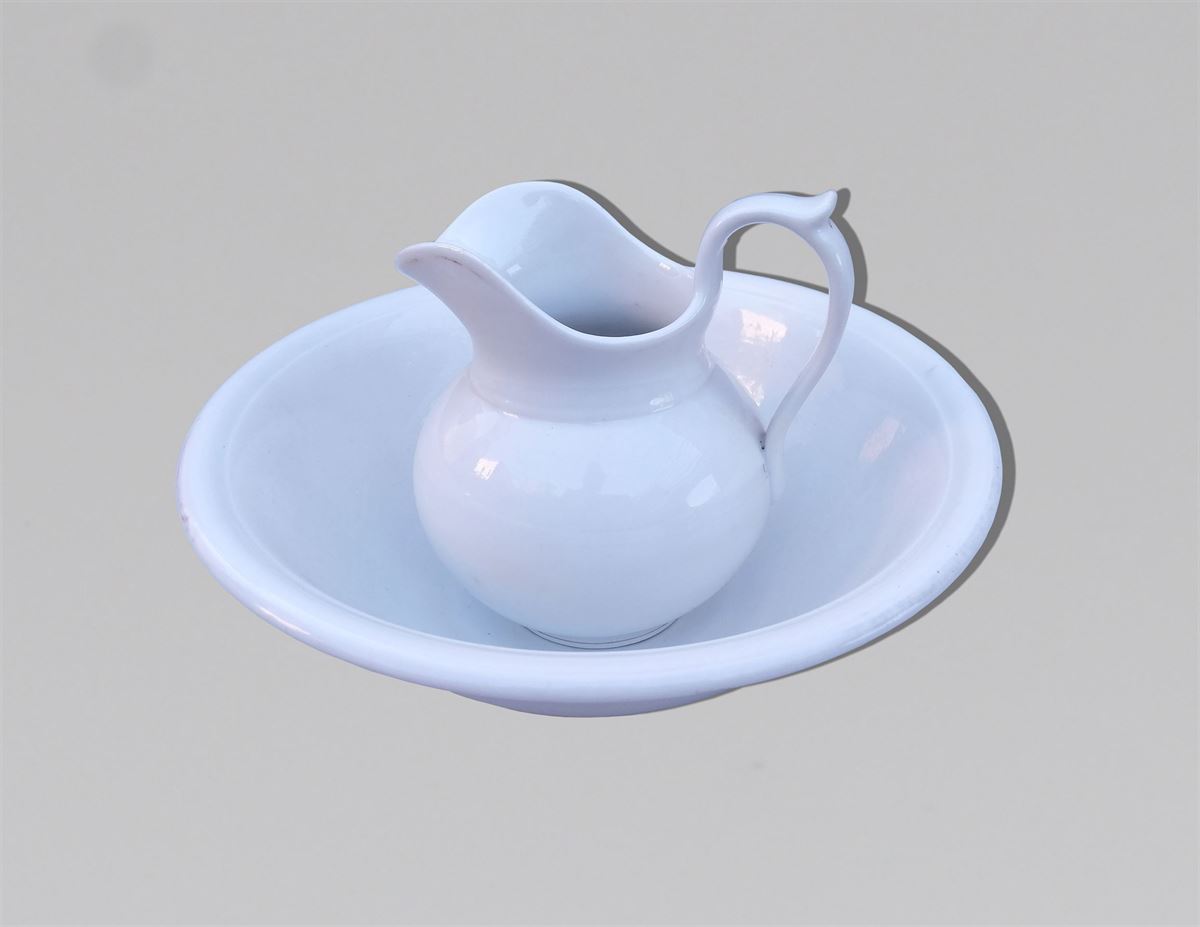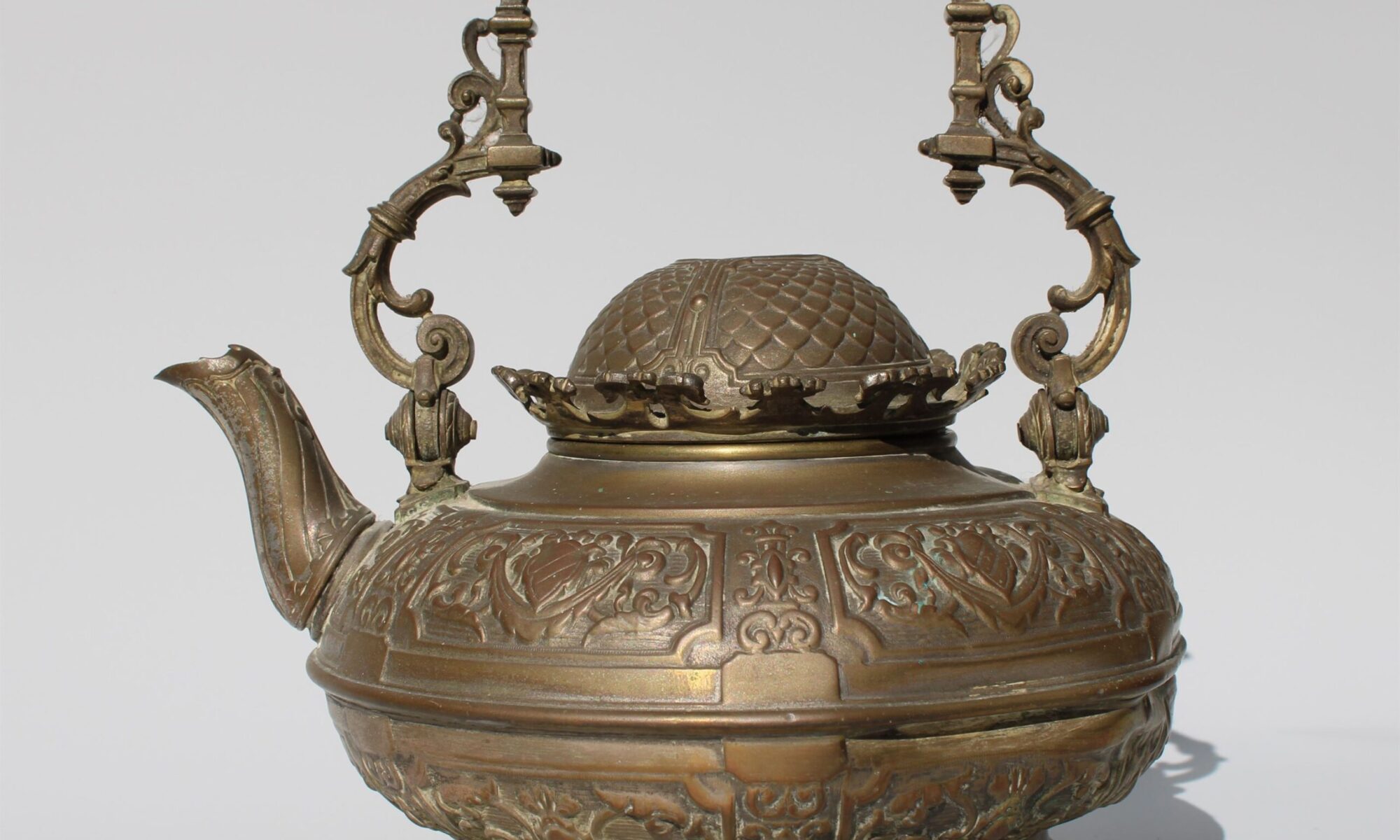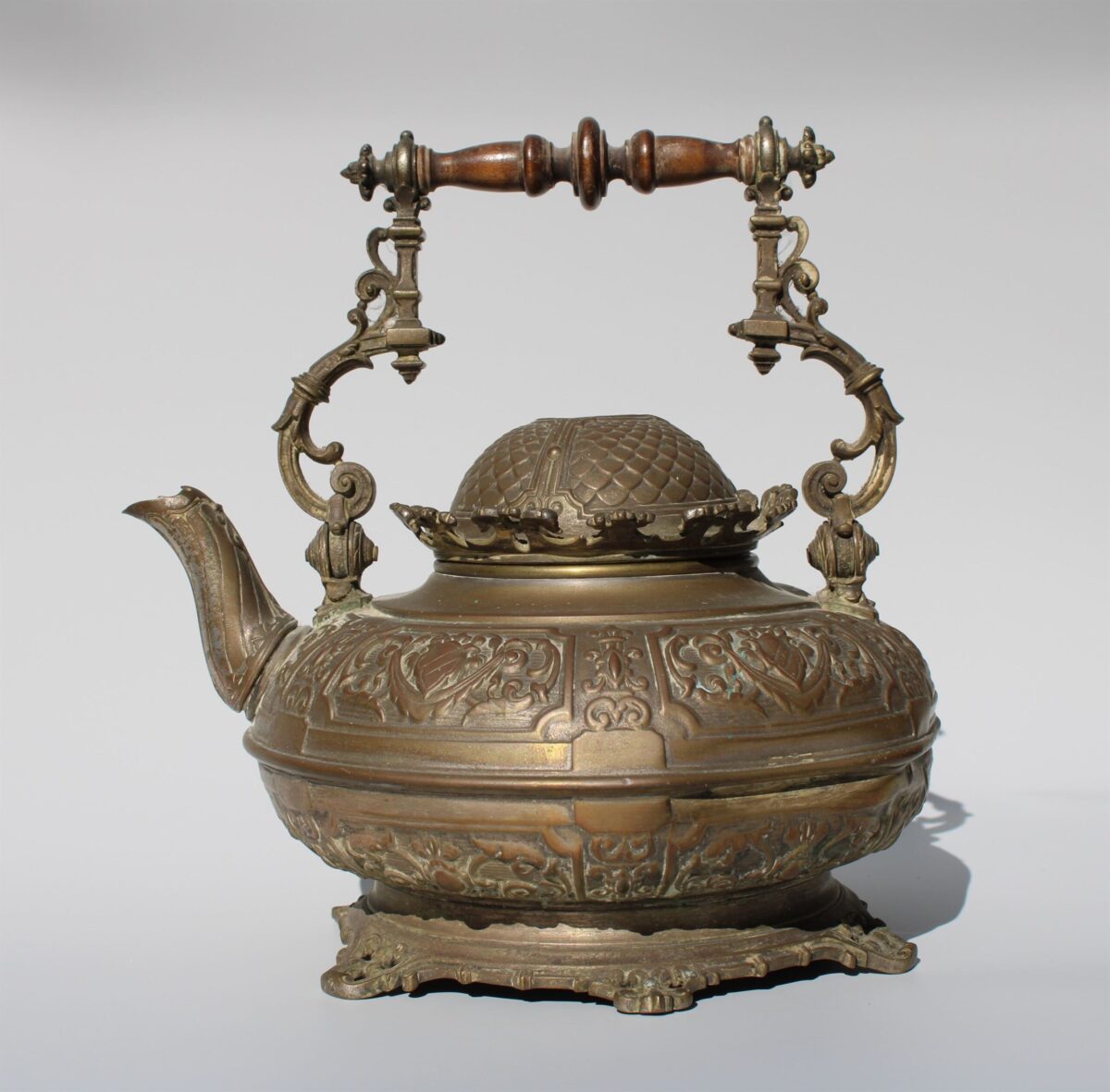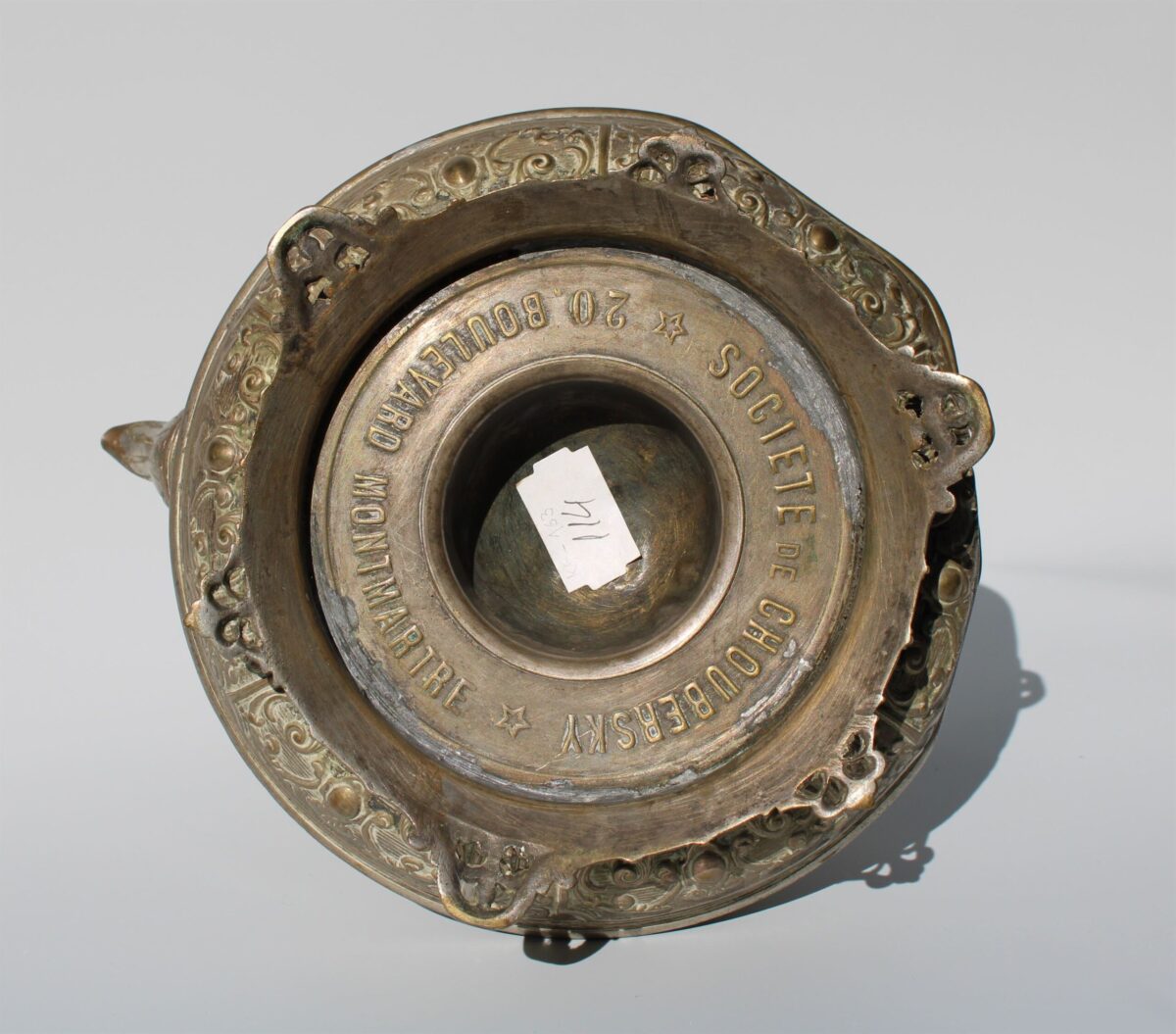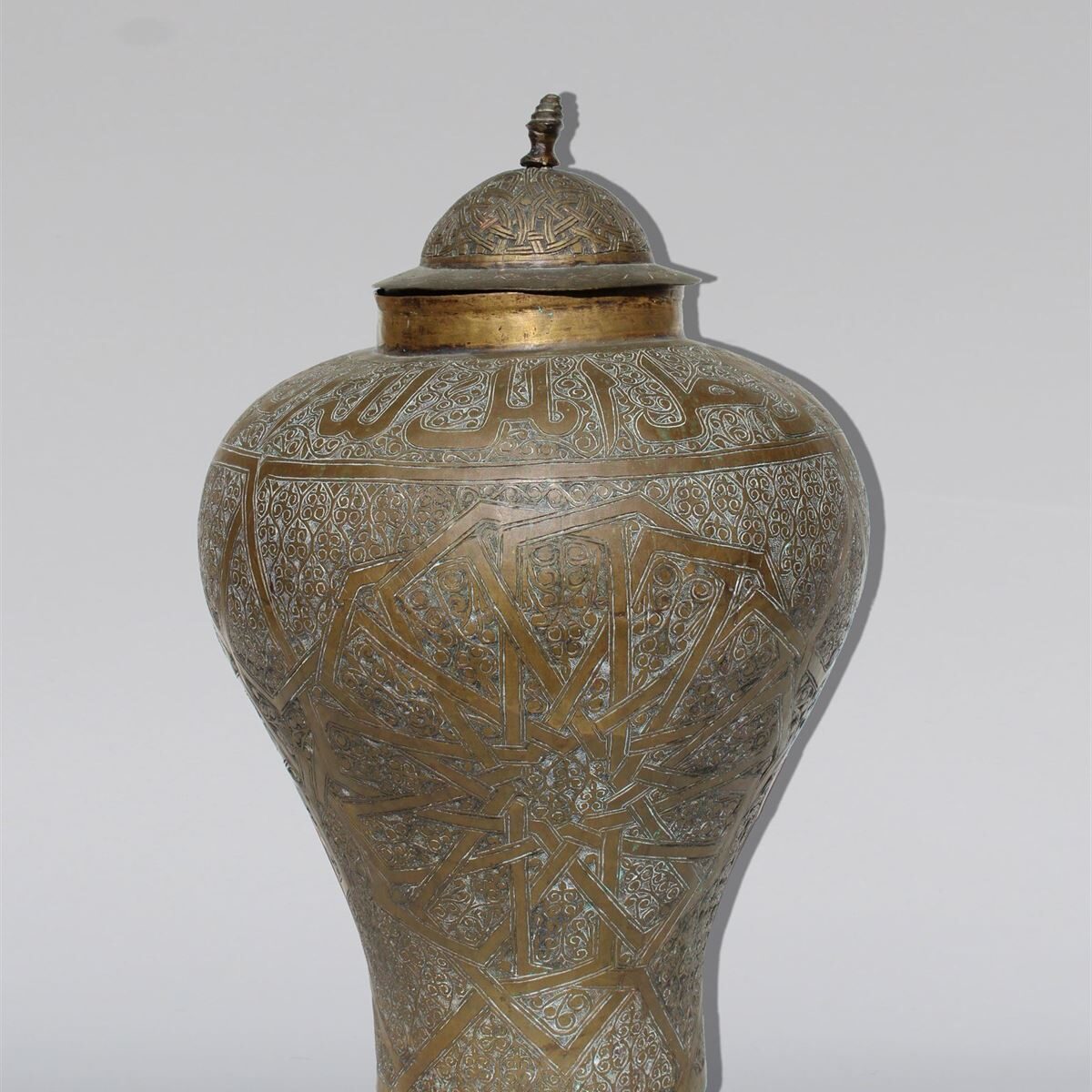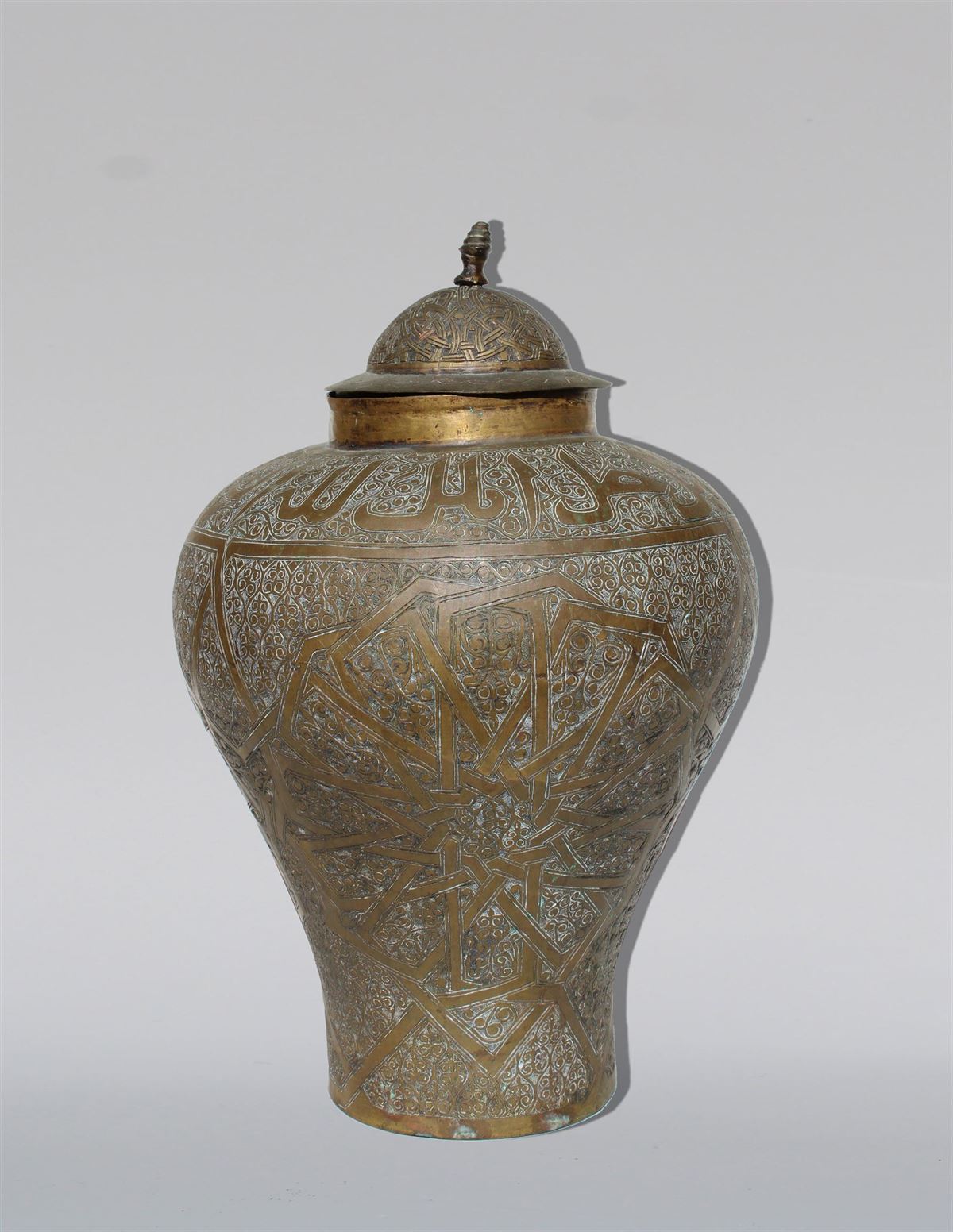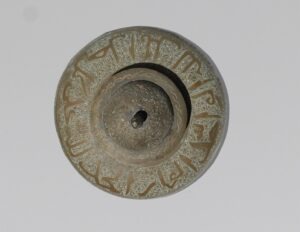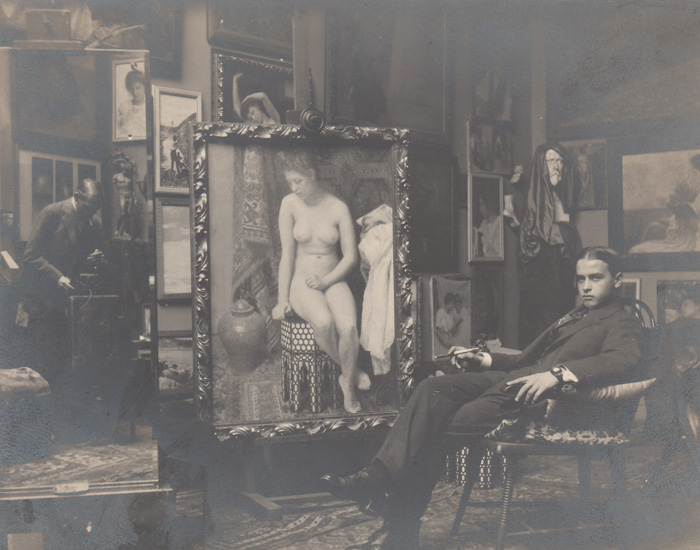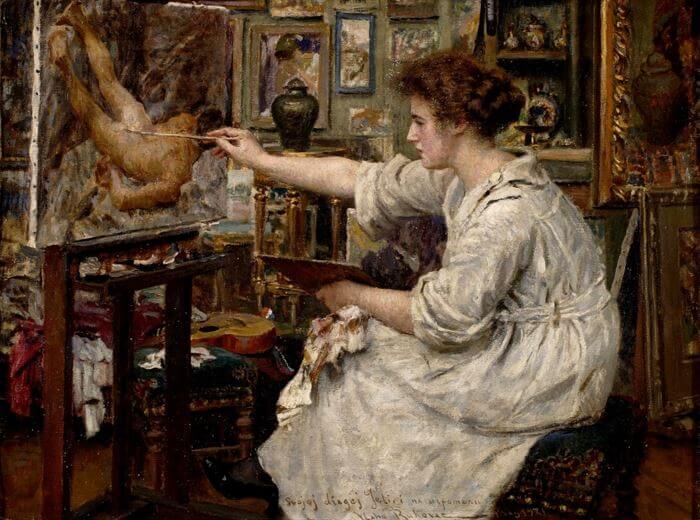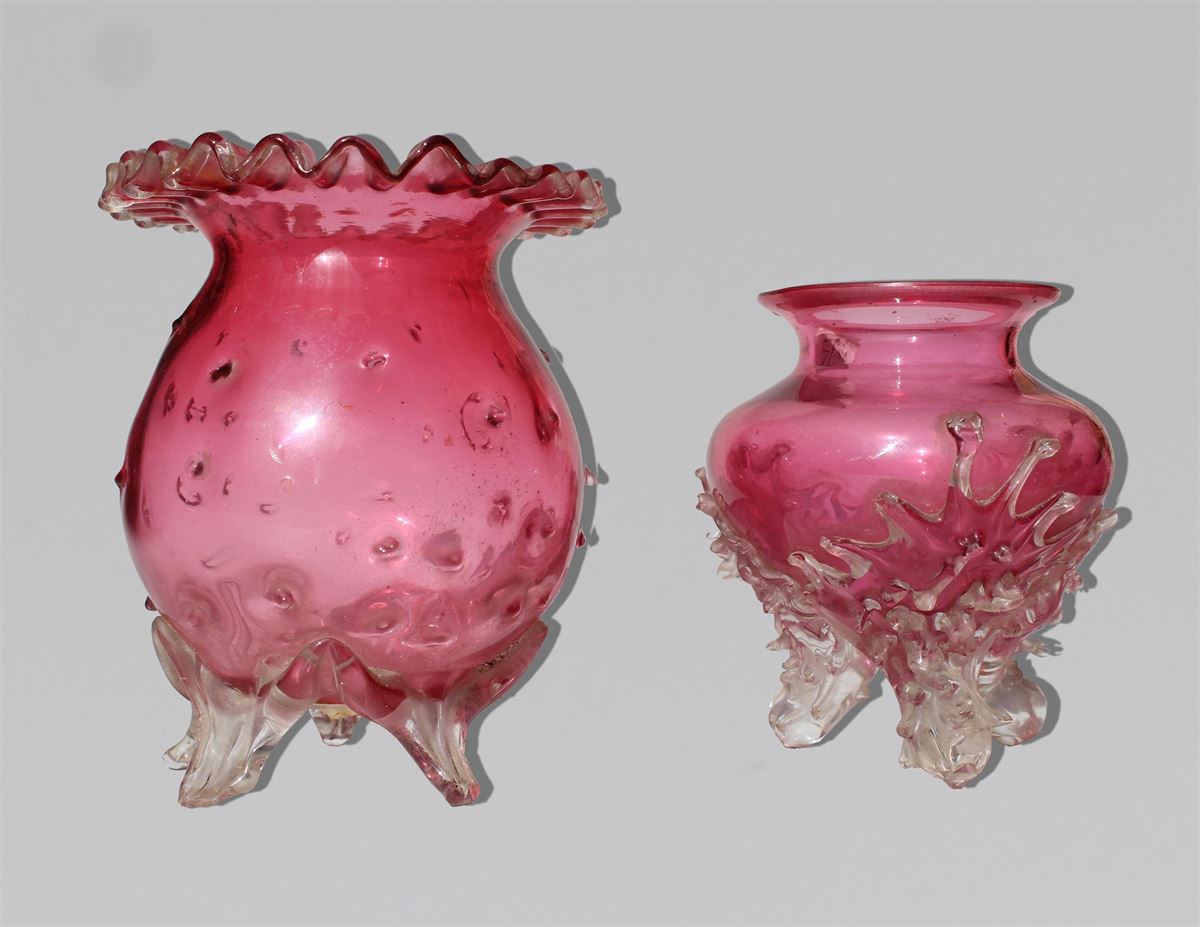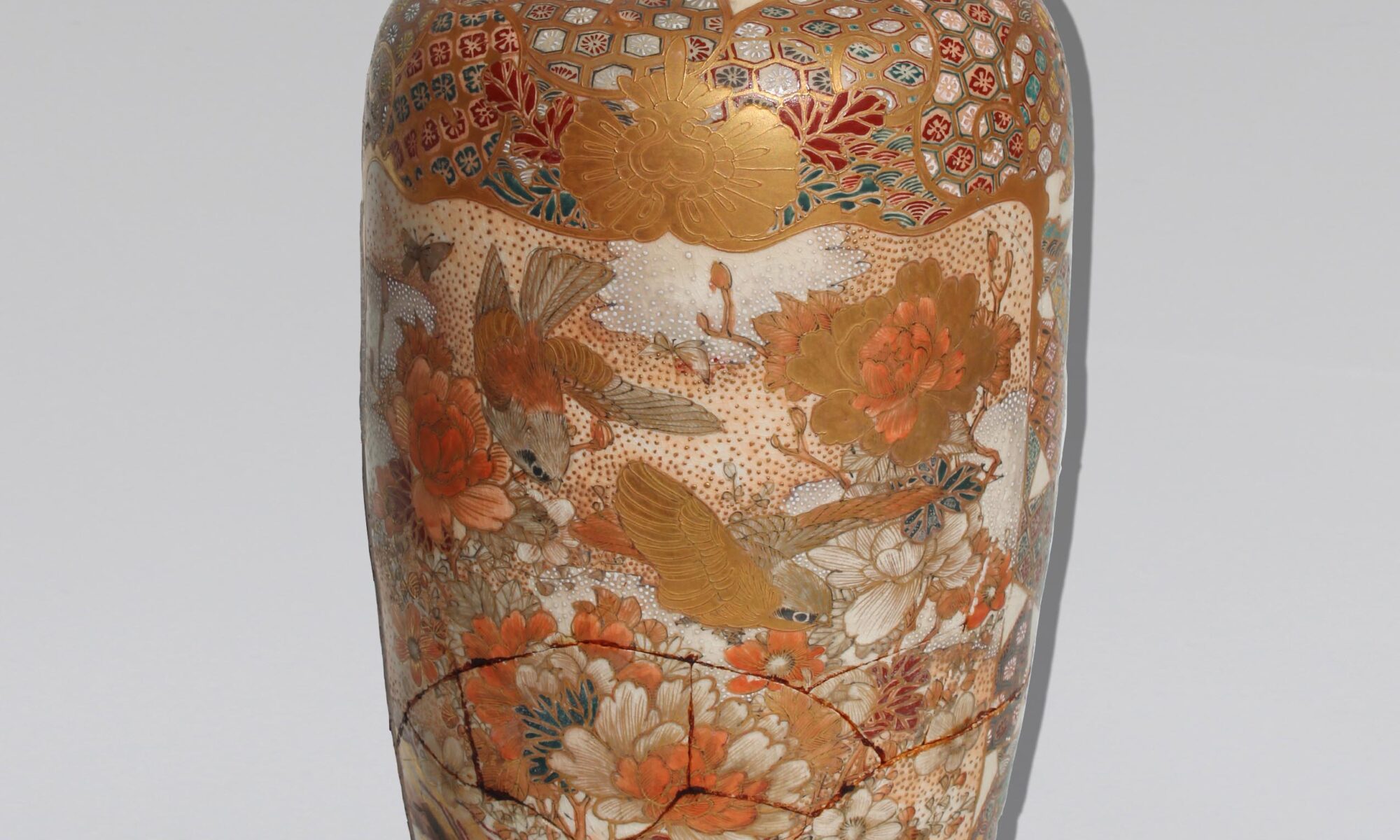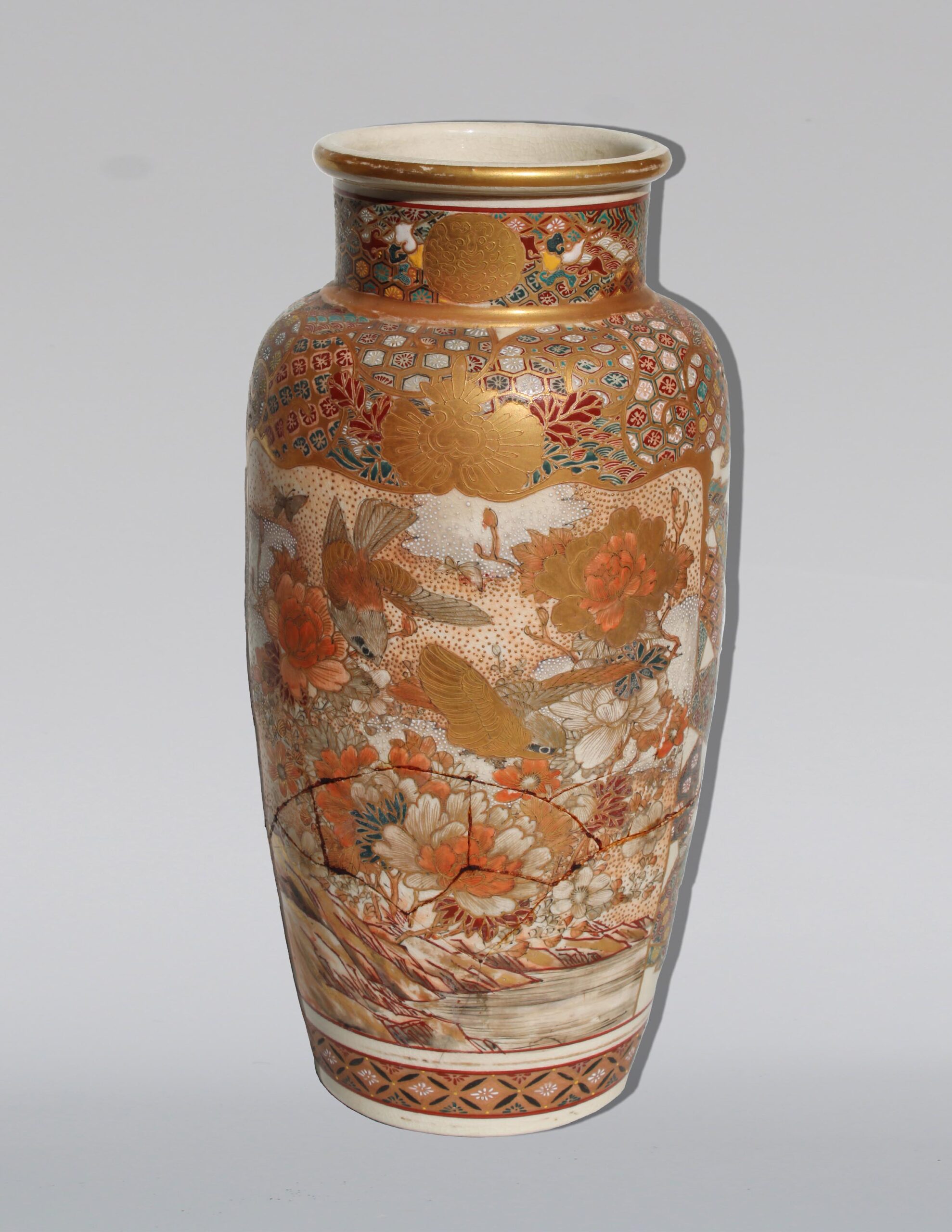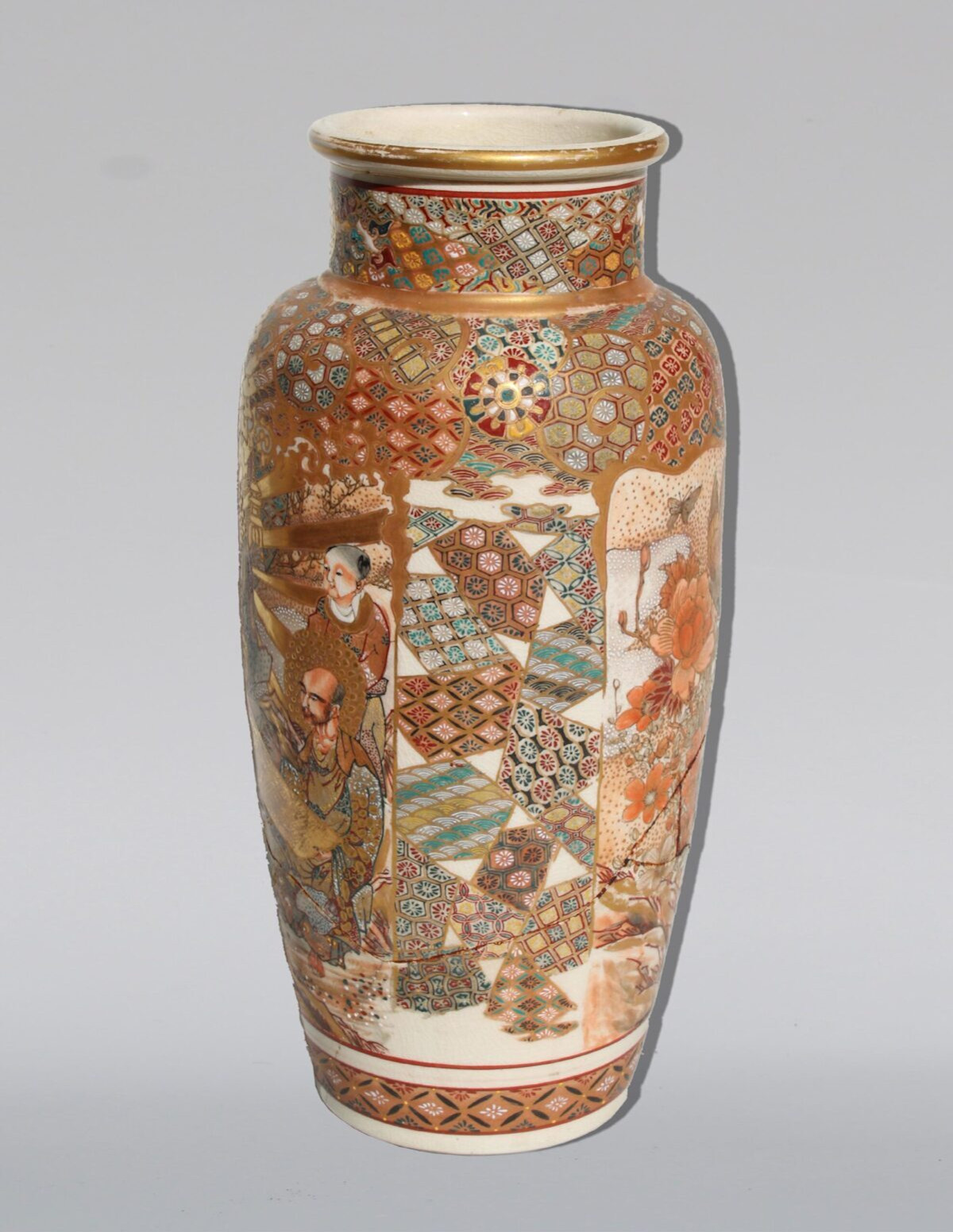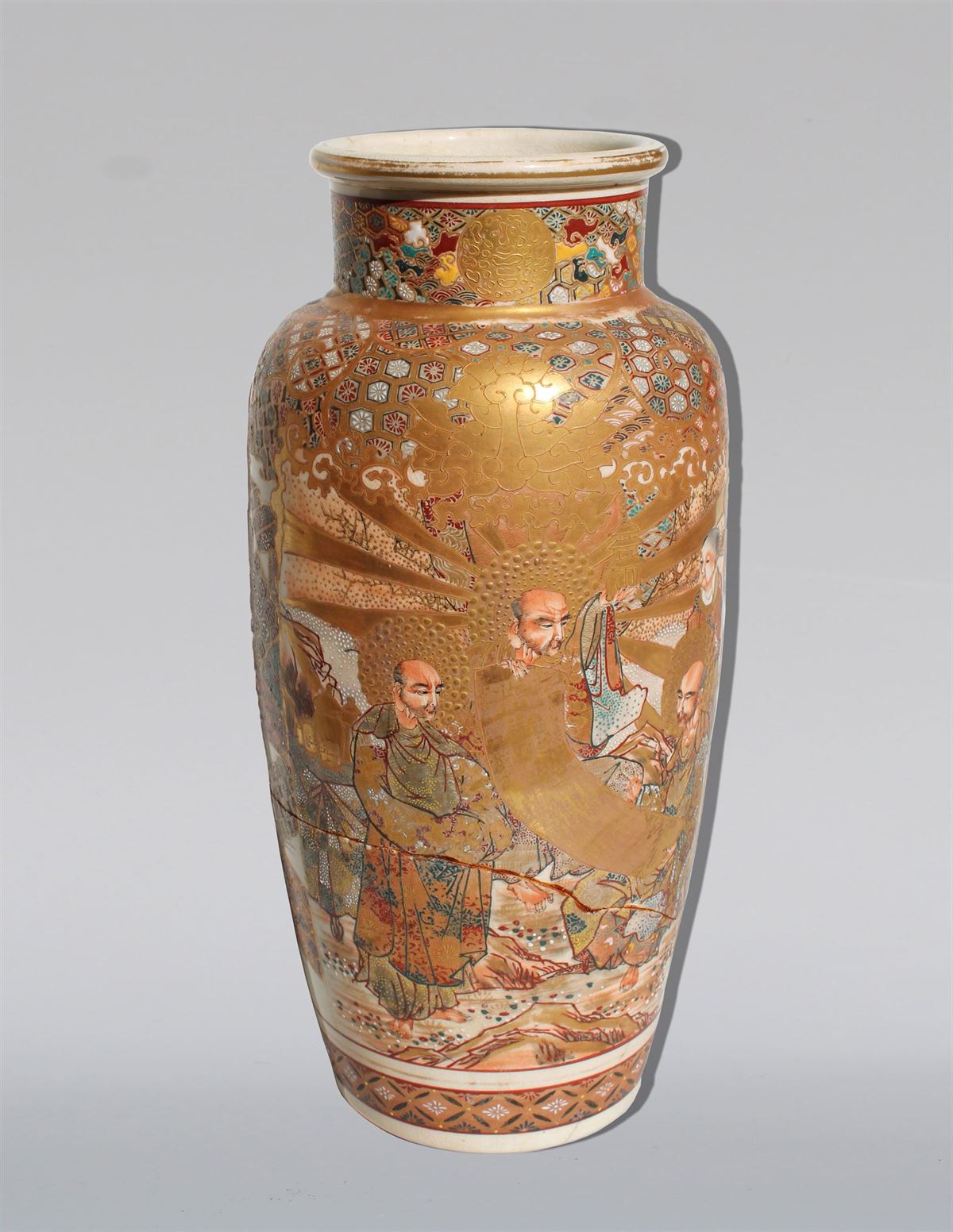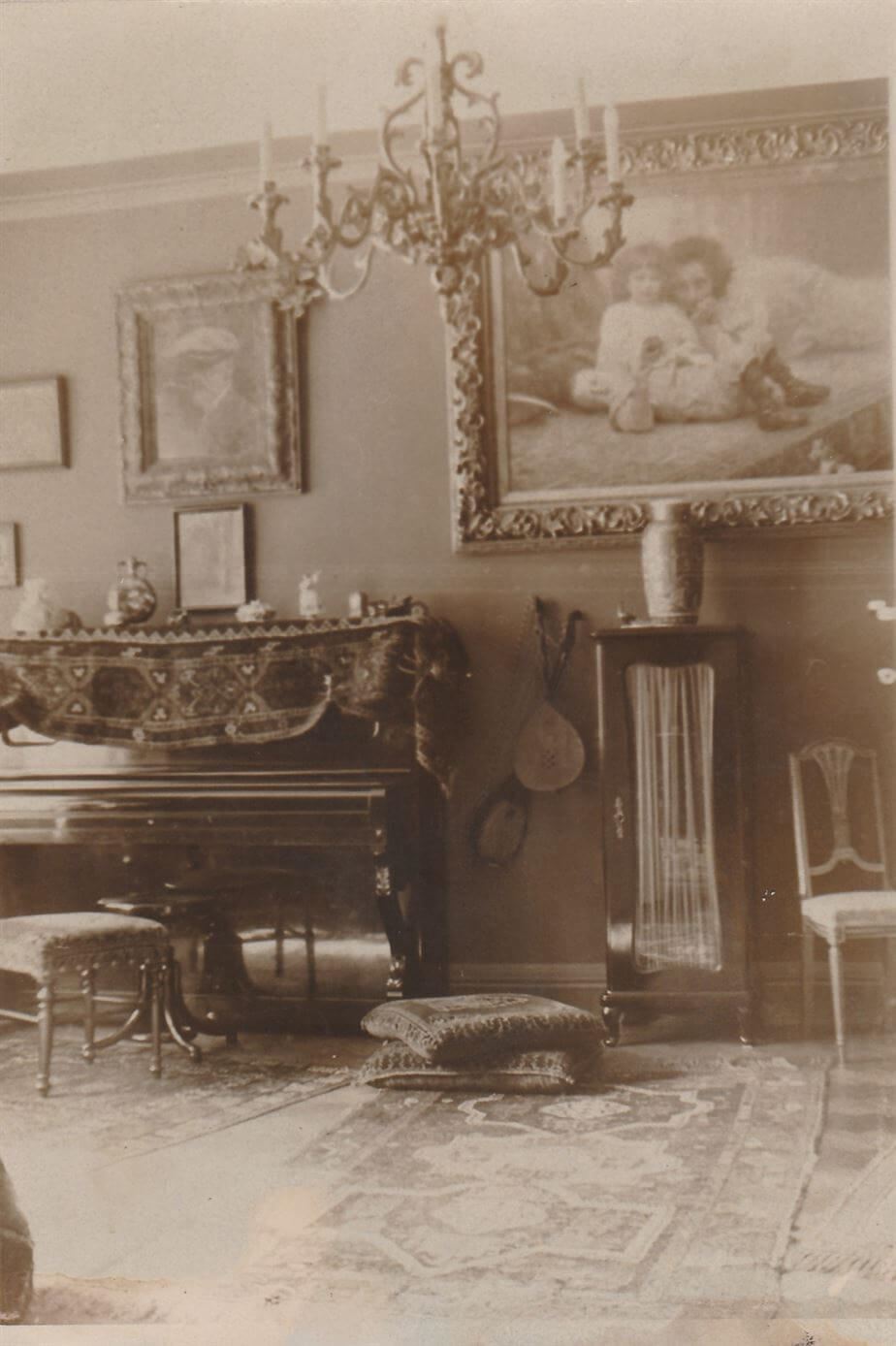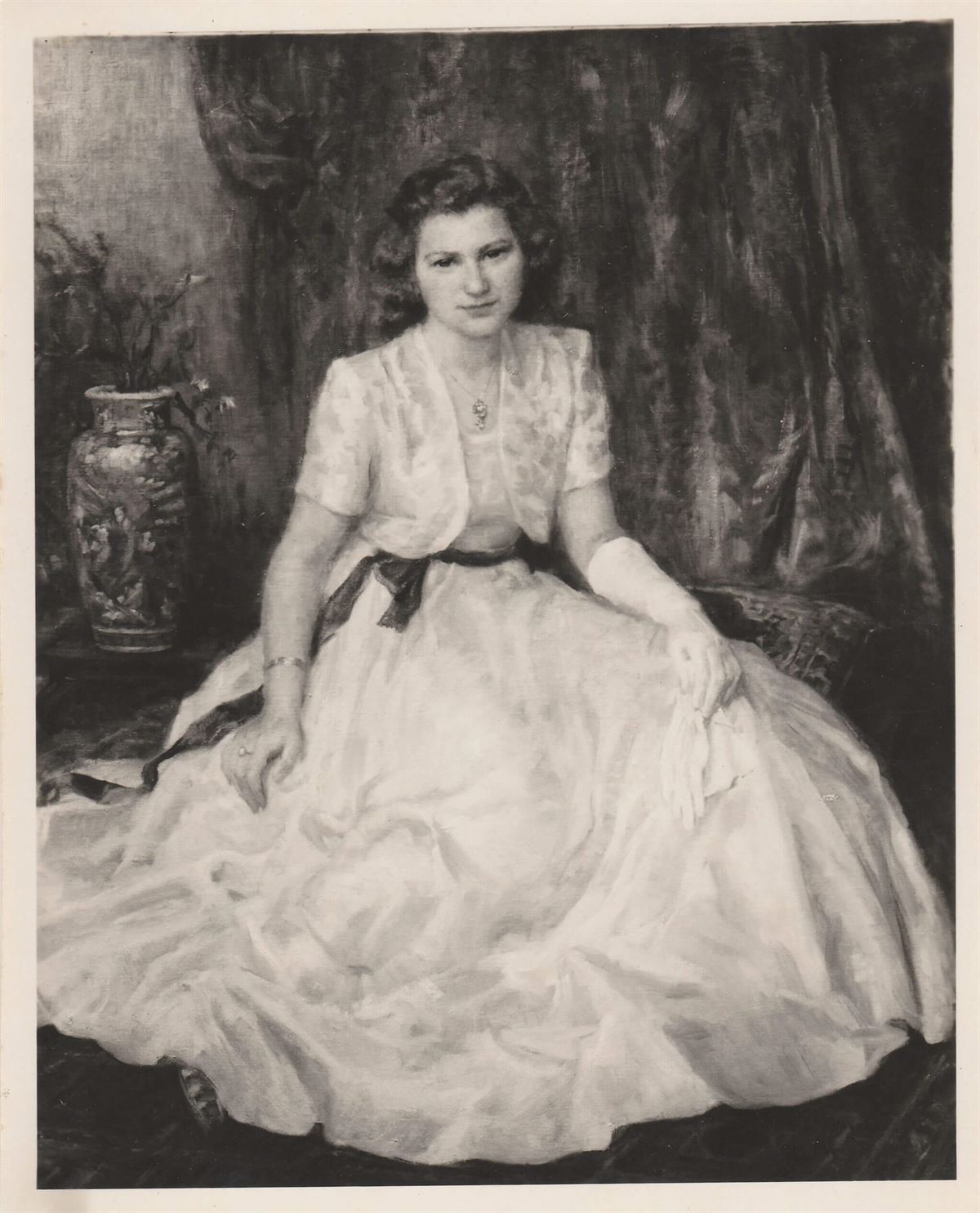The larger clock has a quatrefoil shape containing a polygonal field with concavely indented sides and an inscribed circle with a clock face. Parts of the quatrefoil are tinted brown, and the upper and lower parts of the polygonal section are decorated with a painted floral motif. The clock face retains Roman numerals and a smaller hand, while a portion of the larger hand is missing.
The smaller wall clock also features a porcelain plate on the front side, but elaborated in the shape of a coat of arms. The edges are intricately designed with relief floral motifs and scrolls. The porcelain is painted, and within the prominently raised central circular frame, there is an inserted round metal white enamelled clock face with black Roman numerals. The hands are missing, and a brass pendulum in the shape of a circular plate used to hang on the clock.
The clock manufacturer hails from the German region of Schwarzwald, better known by its English name, Black Forest. The first clocks began production as early as the 17th century, gaining popularity in the 18th century when clock-making industries flourished. Crafted from wood, their distinctive feature was the cuckoo bird announcing the time. Over time, they became renowned for producing high-quality and accurate clocks, expanding their materials to include the production of porcelain wall clocks.


